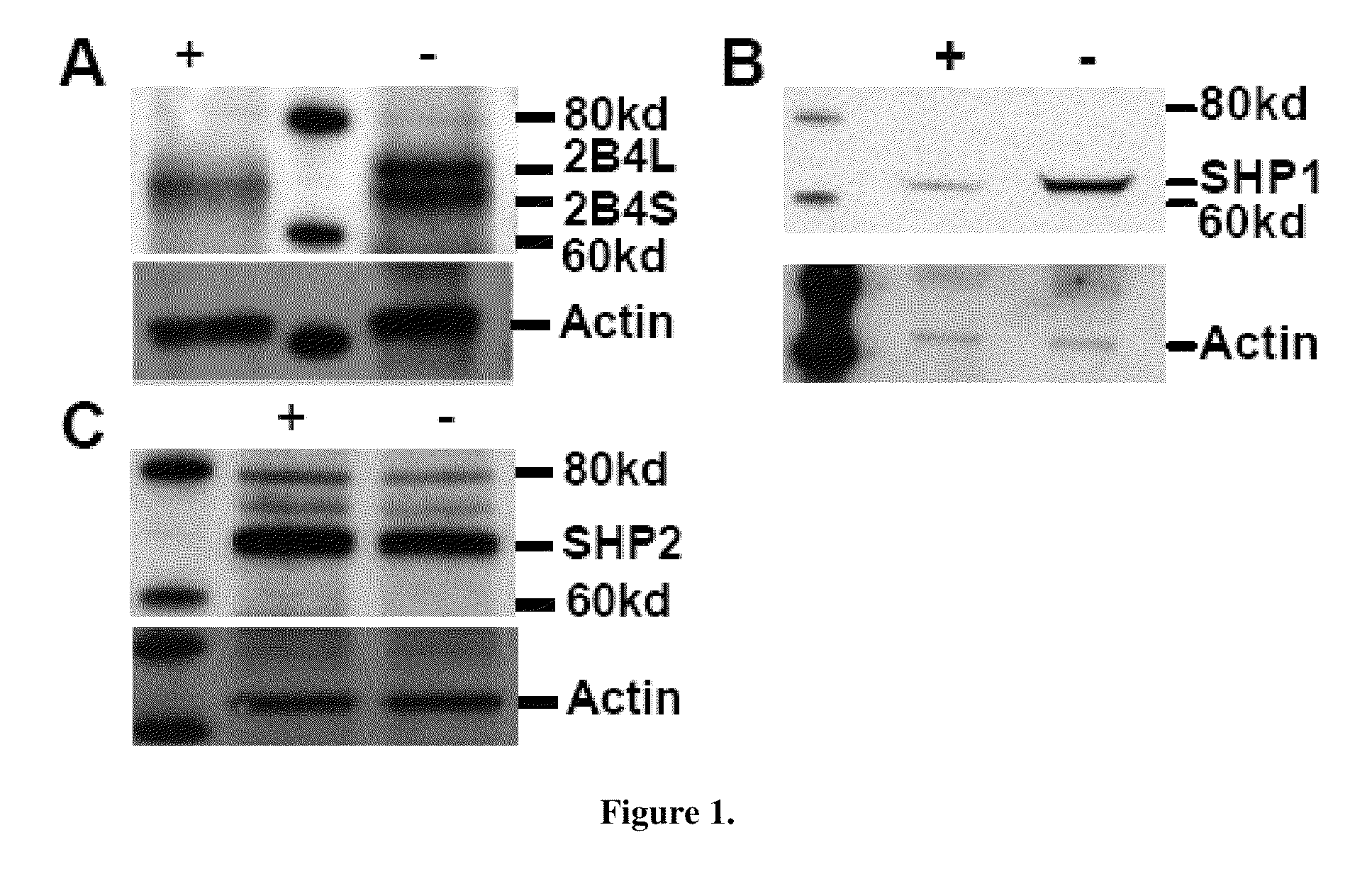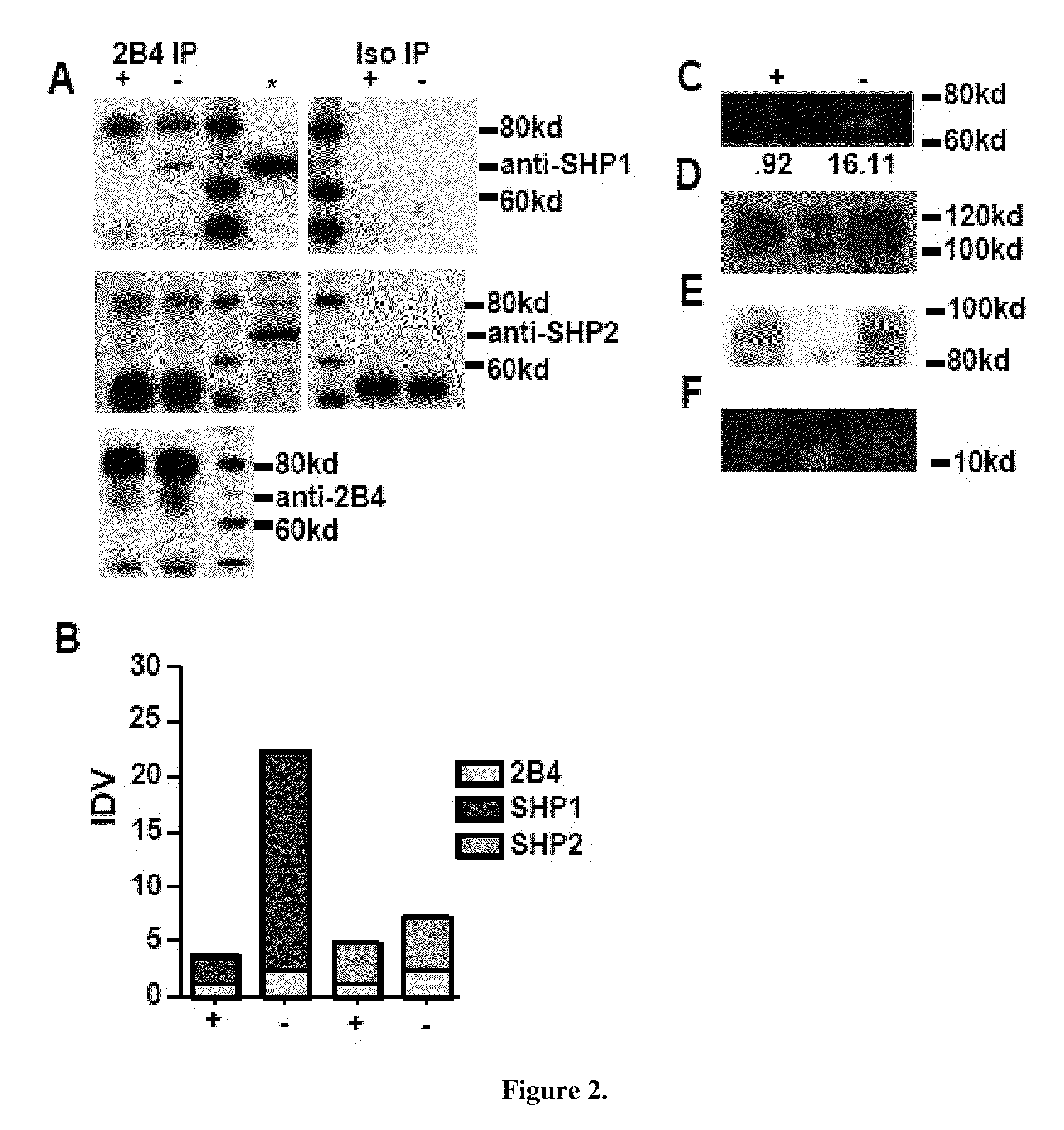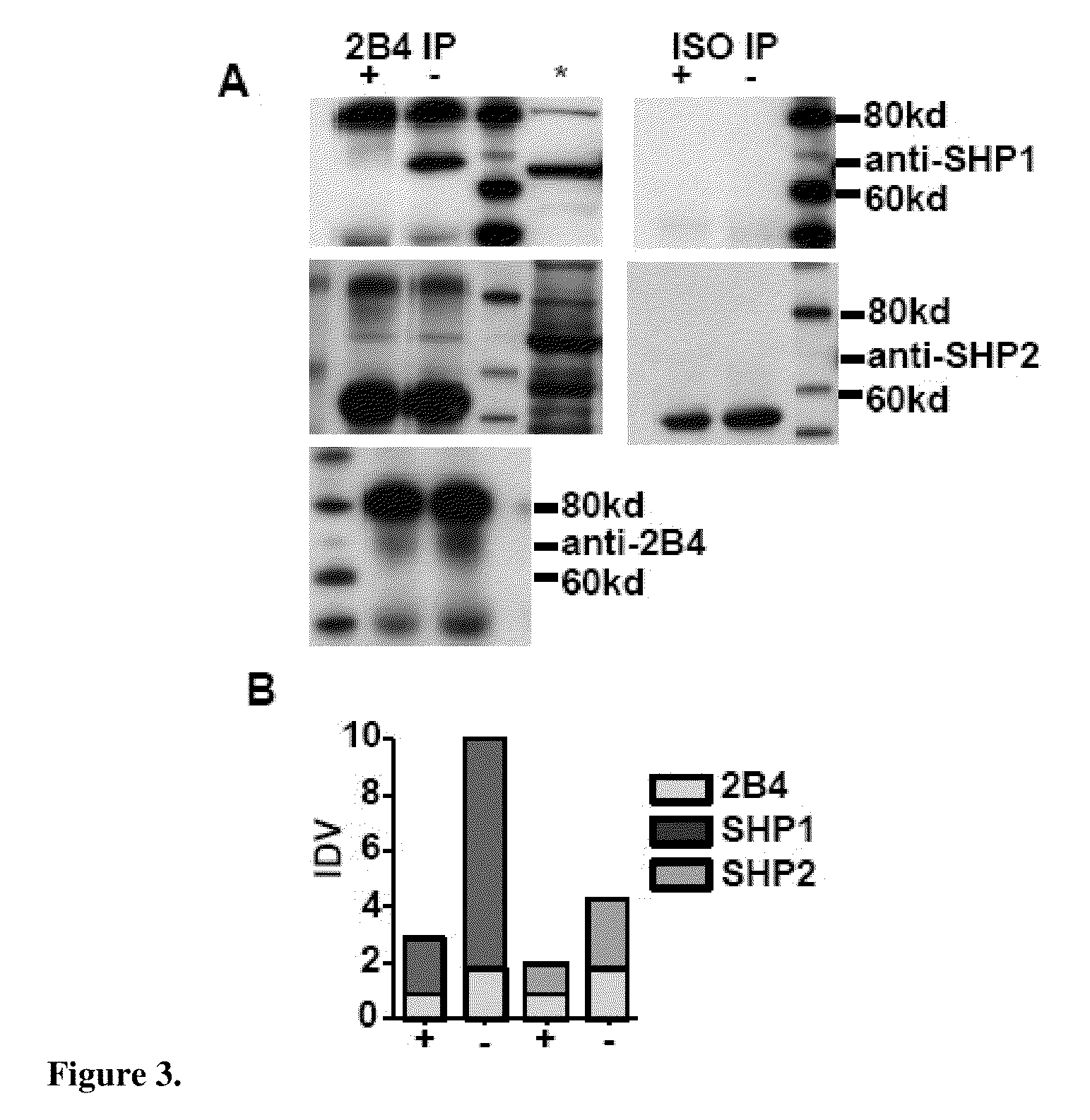Method of activating NK cells
- Summary
- Abstract
- Description
- Claims
- Application Information
AI Technical Summary
Problems solved by technology
Method used
Image
Examples
example i
2B4 and SHP Expression in Ship-Deficient NK Cells
[0064]2B4 levels are increased on the surface of SHIP− / − NK cells. To determine if this increase is due to increased expression of 2B4, rather than increased surface deposition, NK1.1+TcRb— NK cells were sorted from spleens of SHIP− / − (−) and WT (+) mice. Whole cell lysates were prepared from sorted SHIP− / − and WT NK cells, that were non-stimulated, for the presence of 2B4 (FIG. 1A) and blotted. The analysis revealed, consistent with previous FACS analysis, that steady state levels of 2B4 are increased in SHIP− / − NK cells. The ratio of 2B4S to 2B4L was also found skewed towards the long isoform (2B4L) in the SHIP− / − NK cell relative to WT NK cells. In addition to 2B4, whole cell lysates (WCL)3 were blotted for SHP1 (FIG. 1B) and SHP2 (FIG. 1C). This revealed that like 2B4, SHP1 is over-expressed in SHIP− / − NK cells as compared to WT. In contrast SHP2 levels are consistently comparable between SHIP− / − and WT NK cells. These Western blo...
example ii
Increased Recruitment of SHP1 to 2B4 in SHIP-Deficient NK Cells
[0065]Due to the over-expression of 2B4, the bias towards the 2B4L isoform and SHP1 over-expression the inventors deduced a qualitative change in signals emanating from 2B4 in SHIP− / − NK cells. To examine this possibility, 2B4 IPs were prepared from sorted SHIP− / − and WT NK cells that were non-stimulated (FIG. 2). NK1.1+TcRb— NK cells were sorted from spleens of SHIP− / − (−) and WT (+) mice. WCL were then prepared from the purified NK cells and 2B4 IPs prepared. 1,000,000 cell equivalents were used for all IPs. Given the increase of SHP1 in SHIP− / − NK cells, the inventors explored the recruitment of it as well as SHP2 to 2B4. 2B4 and its isotype control were IP in parallel. The IPs were then blotted for SHP1 and SHP2. 2B4 was blotted in the IPs to determine the total amount of receptor that was precipitated in order to normalize the samples (FIG. 2A). The results show a substantial increase in the recruitment of SHP1 to 2...
example iii
Broad Inhibition of Tyrosine Phosphatase Activity Restores SHIP− / − NK Cytolytic Function
[0069]Given the inappropriate degree of SHP1 recruitment to 2B4 in SHIP− / − NK cells, the possibility of using chemical inhibitors to block its tyrosine phosphatase activity was explored to determine if this could restore killing of complex targets by SHIP-deficient NK cells. Standard four-hour 51Cr release assays were performed with SHIP− / − (− / −) or WT (+ / +) LAK cells, with a ratio of 30:1 and 3000 target cells for all conditions. NaOV (100 μM) was used first, a broadly acting tyrosine phosphatase inhibitor to counteract the effects of the SHP1 over-recruitment to 2B4, with a medium-only negative control. The addition of 100 μM sodium orthovanadate to SHIP− / − NK cytolysis assays was found to restore cellular ability to mediate efficient killing (FIG. 4A). Importantly, increased killing by WT LAK cells was not seen against either RMA or RMA-Rae1+ transfectant-targets (FIG. 4A) following the additi...
PUM
| Property | Measurement | Unit |
|---|---|---|
| pH | aaaaa | aaaaa |
| volume | aaaaa | aaaaa |
| volume | aaaaa | aaaaa |
Abstract
Description
Claims
Application Information
 Login to View More
Login to View More - R&D Engineer
- R&D Manager
- IP Professional
- Industry Leading Data Capabilities
- Powerful AI technology
- Patent DNA Extraction
Browse by: Latest US Patents, China's latest patents, Technical Efficacy Thesaurus, Application Domain, Technology Topic, Popular Technical Reports.
© 2024 PatSnap. All rights reserved.Legal|Privacy policy|Modern Slavery Act Transparency Statement|Sitemap|About US| Contact US: help@patsnap.com










